- Region
- Águilas
- Alhama de Murcia
- Jumilla
- Lorca
- Los Alcázares
- Mazarrón
- San Javier
-
ALL AREAS & TOWNS
- AREAS
- SOUTH WEST
- MAR MENOR
- MURCIA CITY & CENTRAL
- NORTH & NORTH WEST
- TOWNS
- Abanilla
- Abarán
- Aguilas
- Alamillo
- Alcantarilla
- Aledo
- Alhama de Murcia
- Archena
- Balsicas
- Blanca
- Bolnuevo
- Bullas
- Cañadas del Romero
- Cabo de Palos
- Calasparra
- Camping Bolnuevo
- Campo De Ricote
- Camposol
- Canada De La Lena
- Caravaca de la Cruz
- Cartagena
- Cehegin
- Ceuti
- Cieza
- Condado de Alhama
- Corvera
- Costa Cálida
- Cuevas De Almanzora
- Cuevas de Reyllo
- El Carmoli
- El Mojon
- El Molino (Puerto Lumbreras)
- El Pareton / Cantareros
- El Raso
- El Valle Golf Resort
- Fortuna
- Fuente Alamo
- Hacienda del Alamo Golf Resort
- Hacienda Riquelme Golf Resort
- Isla Plana
- Islas Menores & Mar de Cristal
- Jumilla
- La Azohia
- La Charca
- La Manga Club
- La Manga del Mar Menor
- La Pinilla
- La Puebla
- La Torre
- La Torre Golf Resort
- La Unión
- Las Palas
- Las Ramblas
- Las Ramblas Golf
- Las Torres de Cotillas
- Leiva
- Librilla
- Lo Pagan
- Lo Santiago
- Lorca
- Lorquí
- Los Alcázares
- Los Balcones
- Los Belones
- Los Canovas
- Los Nietos
- Los Perez (Tallante)
- Los Urrutias
- Los Ventorrillos
- Mar De Cristal
- Mar Menor
- Mar Menor Golf Resort
- Mazarrón
- Mazarrón Country Club
- Molina de Segura
- Moratalla
- Mula
- Murcia City
- Murcia Property
- Pareton
- Peraleja Golf Resort
- Perin
- Pilar de la Horadada
- Pinar de Campoverde
- Pinoso
- Playa Honda
- Playa Honda / Playa Paraíso
- Pliego
- Portmán
- Pozo Estrecho
- Puerto de Mazarrón
- Puerto Lumbreras
- Puntas De Calnegre
- Region of Murcia
- Ricote
- Roda Golf Resort
- Roldan
- Roldan and Lo Ferro
- San Javier
- San Pedro del Pinatar
- Santiago de la Ribera
- Sierra Espuña
- Sucina
- Tallante
- Terrazas de la Torre Golf Resort
- Torre Pacheco
- Totana
- What's On Weekly Bulletin
- Yecla


- EDITIONS:
 Spanish News Today
Spanish News Today
 Alicante Today
Alicante Today
 Andalucia Today
Andalucia Today
The history of the Isaac Peral submarine in Cartagena
Cartagena The Isaac Peral Submarine
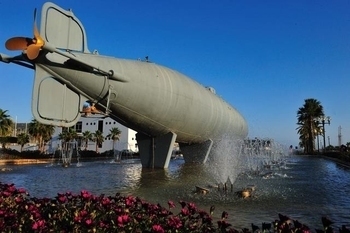
One of the most iconic monuments in the city of Cartagena is no longer to be seen on the seafront next to the Muelle Alfonso XII as it was until the end of 2012 but is now housed inside the Museo Naval, or Naval Museum.
This is the historic submarine designed and built in Cartagena by Isaac Peral, one of the great innovations of the 19th century and one which would doubtless have revolutionised the Spanish Navy had it not been for the jealousy and intrigue which surrounded its creation.
This submarine became one of the most photographed landmarks in Cartagena until the deterioration in its condition forced the decision to move it from the Muelle to an indoor pavilion in the Cartagena Naval Museum.
Isaac Peral
Isaac Peral y Caballero (1851-1895) was both a great seaman and a great inventor. He was trained in San Fernando in the province of Cádiz and took part in many military actions around the world, but his inquisitive and analytical mind led him to study geography, physics and mathematics. When he left the Navy, Isaac founded a business in Madrid where he patented various inventions and installed the first electric power stations in Spain.
The submarine
Isaac Peral is often considered the inventor of the submarine but he did not create the first submergible vessel: he is credited with the first submarine to be powered by electricity and to incorporate underwater torpedo-firing facilities. In this sense he might be better called the "father of the modern submarine".
Peral's Idea
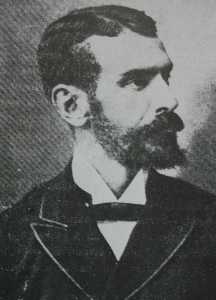 Throughout his Navy career, Isaac Peral's dream was to solve the problem of national defence against the modern war machines developed by other countries. His aim was, in short, to invent the perfect weapon of war.
Throughout his Navy career, Isaac Peral's dream was to solve the problem of national defence against the modern war machines developed by other countries. His aim was, in short, to invent the perfect weapon of war.
He first put pen to paper regarding the idea of the submarine on 20th September, 1884, following his return in 1882 from the Philippines, where he had fallen seriously ill. Back in Spain he had time to devote to his teaching and his studies.
In 1885 Spain came under threat from Germany in the Carolina Islands, where the German warship "Iltis" arrived with its captain intending to hoist the German flag on the islands. At this point the patriotic Peral published his ideas to revolutionize Spanish defence strategy with his torpedo submarine, and received unanimous support, As a result he set to work on turning the plans into a reality.
First Steps
Supported by the Minister for the Navy, Admiral Manuel de la Pezuela, Peral took over the Arsenal de la Carraca to begin construction and testing of the submarines engines. His first budget was 5,000 pesetas, and he personally traveled abroad to find materials which were unavailable in Spain, such as optical equipment from France, torpedoes and other accessories in Berlin, accumulators in Brussels and steel, electric motors, propellers and torpedo tubes in London.
 The first few years were centred on what Peral called the "depth machine", a complex electrical system on which the success of the entire submarine depended. At this point the initial budget had to be increased various times, until eventually it reached 300,000 pesetas.
The first few years were centred on what Peral called the "depth machine", a complex electrical system on which the success of the entire submarine depended. At this point the initial budget had to be increased various times, until eventually it reached 300,000 pesetas.
A large number of accumulators or storage batteries were needed, as well as three dynamos, two 30CV engines, a torpedo tube and other elements, on top of all the metal for the outer shell of 22 metres. This part of the construction began in 1887.
The Appearance of the Submarine
In his master plan, Perals craft consisted of a steel shell, 22 metres long and 2.87 metres wide. The sub was shaped like a spindle, and had a turret in the centre where the entry hatches were situated. It was painted white on the inside and grey on the outside. It also included a modern periscope and a large number of small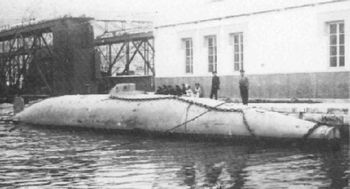 details by means of which Peral attempted to solve the difficulties of underwater travel, such as the oxygen supply and the clearness of the windows.
details by means of which Peral attempted to solve the difficulties of underwater travel, such as the oxygen supply and the clearness of the windows.
Inside was the rudder control, and course plotter, manned by two people. The corridor which ran from stern to bow was white, and illuminated by electric light bulbs. Both the walls and the ceiling were ochre-coloured, and hid the electrical wiring behind them. The floor was covered by a rubber mat which acted as isolation from all the electricity on the vessel.
Launch, 1888
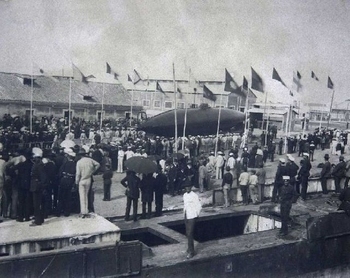 Once it was ready, the submarine took the stage in front of a large and excited audience. News of the construction of a Spanish underwater weapon had spread and had awakened a certain patriotic fervour, so there were large numbers of people at the Arsenal de la Carraca on 8th September, 1888, to witness the official launch.
Once it was ready, the submarine took the stage in front of a large and excited audience. News of the construction of a Spanish underwater weapon had spread and had awakened a certain patriotic fervour, so there were large numbers of people at the Arsenal de la Carraca on 8th September, 1888, to witness the official launch.
It was a historic moment, and without realizing it Peral had made himself famous. He found himself the centre of public attention, and the story was run by all the main newspapers. The next day they were all able to report that the vessel had behaved "exactly as its designer had predicted", and next phase was the official testing of the craft as a torpedo-boat.
Perals Success
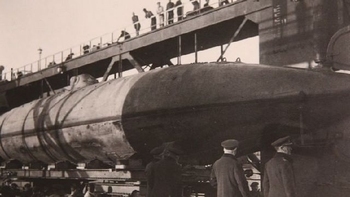 News of Perals invention quickly spread around the world, in some cases a little too quickly and with too much detail. Reports of Perals technical innovations were too graphic, and, inexplicably, the new Minister for the Navy, José María Berenguer, was making life increasingly difficult for the inventor. Not long afterwards two very similar submarines appeared in France and Italy .
News of Perals invention quickly spread around the world, in some cases a little too quickly and with too much detail. Reports of Perals technical innovations were too graphic, and, inexplicably, the new Minister for the Navy, José María Berenguer, was making life increasingly difficult for the inventor. Not long afterwards two very similar submarines appeared in France and Italy .
Despite all this, when the time came for testing, the sub showed it could perform the roles for which it had been designed. Depth maintenance, prolonged underwater navigation, the capacity to attack enemy ships, the ability to advance without being seen, all of these were proven, and together with all the technological advances Peral had made, the submarine proved a resounding success.
On 6th March, 1889, six months after the launch, official testing of the sub began, conducted by the Navys Board of Experts. The first tests concerned surface navigation, and the correct working of propellers and engines .
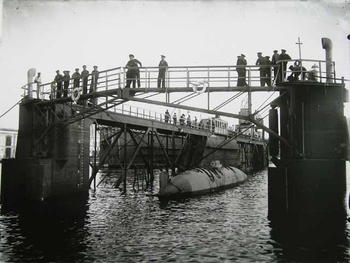 Although some modifications had to be made to the engine, and the test had to be repeated, this test was passed and it was demonstrated that the sub could travel around the bay of Cádiz.
Although some modifications had to be made to the engine, and the test had to be repeated, this test was passed and it was demonstrated that the sub could travel around the bay of Cádiz.
7th August was the date set for the immersion test in Dock nº 2 of the Arsenal, and here the sub showed again that not only could it submerge, but also that it could do so without damage to on-board equipment or crew.
During these official tests Peral was subjected to slanderous accusations and lies about the results of the tests, and it was clear that a web of intrigue and power struggles was beginning to surround the invention. All in all, with a couple of minor alterations, the tests were passed with flying colours. On 25th August a dud torpedo was successfully fired.
On 30th November, the submarine dived until only the turret showed, and on 5th November a depth of 7.5 metres was reached for ten minutes. The first navigating dive was carried out on 15th December at a depth of 9 metres.
The first official submarine navigation test came almost six months later, on 7th June, 1889, and lasted an hour. A few days later there was also a simulated attack on the "Colón". In this test the sub would attack twice, once by day and once by night. In the day attack the target was not hit, and the sub was seen by people on board, but the nighttime attack was a complete success.
An unexpected setback
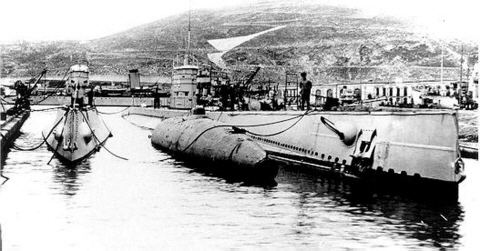 Despite its success in all the tests proposed, in September 1890 the Board of Evaluation inexplicably issued a critical report. They said that the velocity and autonomy of the submarine were not as great as had been expected, that the daytime combat mission had been a failure, and that the working of the engines was questionable.
Despite its success in all the tests proposed, in September 1890 the Board of Evaluation inexplicably issued a critical report. They said that the velocity and autonomy of the submarine were not as great as had been expected, that the daytime combat mission had been a failure, and that the working of the engines was questionable.
In the end it was decided that construction could go ahead, but within certain limits. Peral then imposed his own conditions, which were interpreted as him turning down the order, so it was ordered that the machinery and engines of the submarine be dismantled. This was done, and the pieces lay discarded in a corner of the Arsenal de la Carraca. As a final gesture, the Navy awarded Peral the Naval Merit medal, with red colours for the bravery with which he approached the tests.
The following year, the torpedo tube and the engines were removed, along with part of the equipment, and the empty shell was left in the Arsenal. Without Peral, no more submarines were built in Spain for over 30 years, and the country lost a unique chance to make a move which would have put it ahead of the rest of the world.
Conspiracies and Jealousy
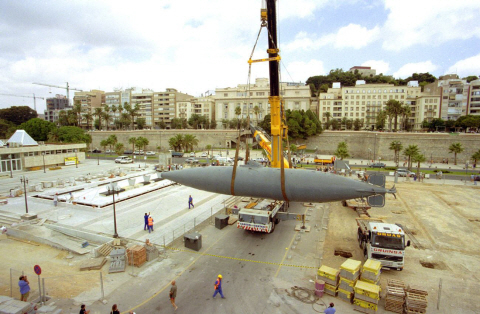 One of the great tragedies of modern spanish history is that this project did not progress due to the jealousy it aroused.
One of the great tragedies of modern spanish history is that this project did not progress due to the jealousy it aroused.
As the fame of Peral grew, the obstacles placed in his way seemed to increase, and there was a great deal of speculation as to how the plans were so obviously released to overseas navies whilst testing was still underway, and the sub was also the focus of sabotage at this time.
The suspicion of posterity has always fallen on the new Minister, José María Berenguer, who wanted to prevent Peral being a candidate for the post of Representative of the Port of Santa María de Cádiz, a post which he coveted for his own son. For many this explains the surprising opposition to such a key project for the Spanish navy, and one which had aroused the enthusiasm of the Queen Regent María Cristina. In an attempt to defend himself later, in 1891, Peral regretted having lost the support of the previous minister, Pezuela: "No doubt I would have found in that dignified and respectable general all the support I needed". What is clear is that the conspirators and plotters were far more interested in their own pockets than in the good of the country.
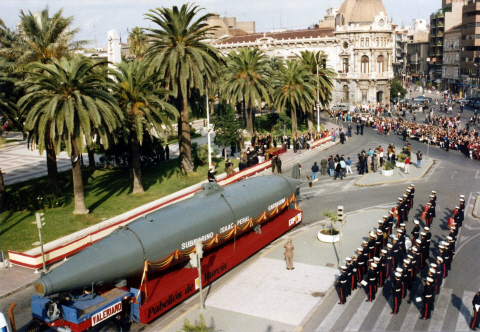 In 1895 Isaac Peral travelled to Berlin to be operated on for cancer, but contracted meningitis and died, aged only 43. His remains were exhumed in 1911 and brought to Cartagena.
In 1895 Isaac Peral travelled to Berlin to be operated on for cancer, but contracted meningitis and died, aged only 43. His remains were exhumed in 1911 and brought to Cartagena.
22 years later the first submarine to enter into the service of the Spanish Forces was named in honour of Peral and in 2014 the Navy will launch its most advanced submarine ever, the S-80, under construction in the Navantia yards in Cartagena, the first of which will also be named the Isaac Peral.
Modern history
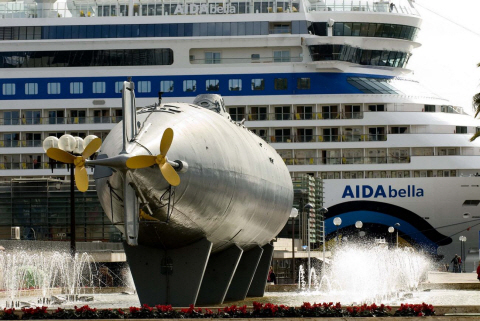 Following its final launch in 1888, the vessel was sent to the Arsenal de la Carraca for scrap, where it remained until 1929, when Admiral Mateo García de los Reyes, first commander of the Spanish submarine fleet, recovered the hull and sent it to Cartagena, where it was positioned in front of the Submarine base in 1930.
Following its final launch in 1888, the vessel was sent to the Arsenal de la Carraca for scrap, where it remained until 1929, when Admiral Mateo García de los Reyes, first commander of the Spanish submarine fleet, recovered the hull and sent it to Cartagena, where it was positioned in front of the Submarine base in 1930.
On 1st December 1965, following a request from the council of Cartagena, it became a monument in the plaza de los Héroes de Cavite, at the entrance to the historic old quarter of the city, where it remained until 1991, before becoming a temporary exhibit in the Pavilion of the Region of Murcia in the Seville World fair of 1992.
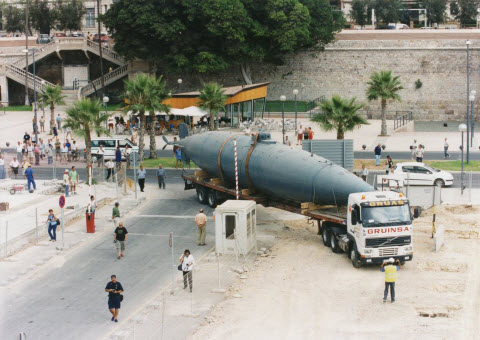 When it returned from Seville, it once again resumed its position in the plaza Héroes de Cavite.
When it returned from Seville, it once again resumed its position in the plaza Héroes de Cavite.
In 2002 the dockside area of Cartagena was totally remodelled, taking on its current aspect, during which the submarine was transferred to a location in front of the ARQUA museum, greeting visitors to the cruise ship port as they arrive in Cartagena as part of a water feature.
However, years of exposure to the sun and the constant presence of water around the vessel resulted in a marked deterioration in its condition, allied to the desire of the Port Authority to remodel the Paseo del Muelle, and the transfer of the Naval Museum to the CIM building at the far end of the paseo. On saturday 15th December 2012, the Isaac peral was transferred from the Paseo to its new home , forming part of the exhibitis of the Naval Museum, in a sala dedicated to the history of submarines.
Cartagena
El Carmoli
Islas Menores and Mar de Cristal
La Manga Club
La Manga del Mar Menor
La Puebla
La Torre Golf Resort
La Union
Los Alcazares
Los Belones
Los Nietos
Los Urrutias
Mar Menor Golf Resort
Pilar de la Horadada
Playa Honda / Playa Paraiso
Portman
Roldan and Lo Ferro
San Javier
San Pedro del Pinatar
Santa Rosalia Lake and Life resort
Terrazas de la Torre Golf Resort
Torre Pacheco
Aledo
Alhama de Murcia
Bolnuevo
Camposol
Condado de Alhama
Fuente Alamo
Hacienda del Alamo Golf Resort
Lorca
Mazarron
Puerto de Mazarron
Puerto Lumbreras
Sierra Espuna
Totana
Abaran
Alcantarilla
Archena
Blanca
Corvera
El Valle Golf Resort
Hacienda Riquelme Golf Resort
Lorqui
Molina de Segura
Mosa Trajectum
Murcia City
Peraleja Golf Resort
Ricote
Sucina
Condado de Alhama
El Valle Golf Resort
Hacienda del Alamo Golf Resort
Hacienda Riquelme Golf Resort
Islas Menores and Mar de Cristal
La Manga Club
La Torre Golf Resort
Mar Menor Golf Resort
Mazarron Country Club
Mosa Trajectum
Peraleja Golf Resort
Santa Rosalia Lake and Life resort
Terrazas de la Torre Golf Resort
La Zenia
Lomas de Cabo Roig

CAMPOSOL TODAY Whats OnCartagena SpainCoronavirusCorvera Airport MurciaMurcia Gota Fria 2019Murcia property news generic threadWeekly Bulletin
